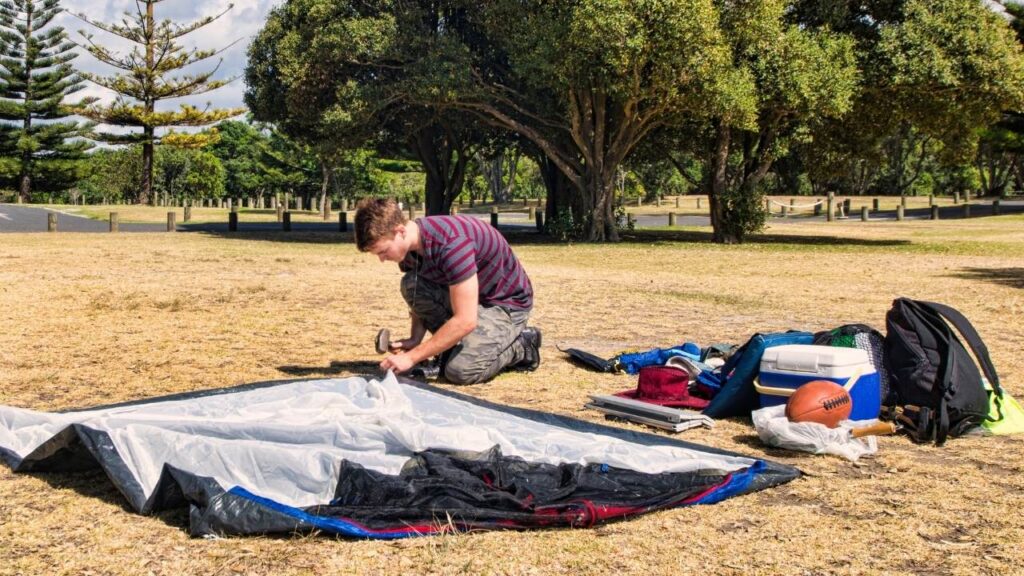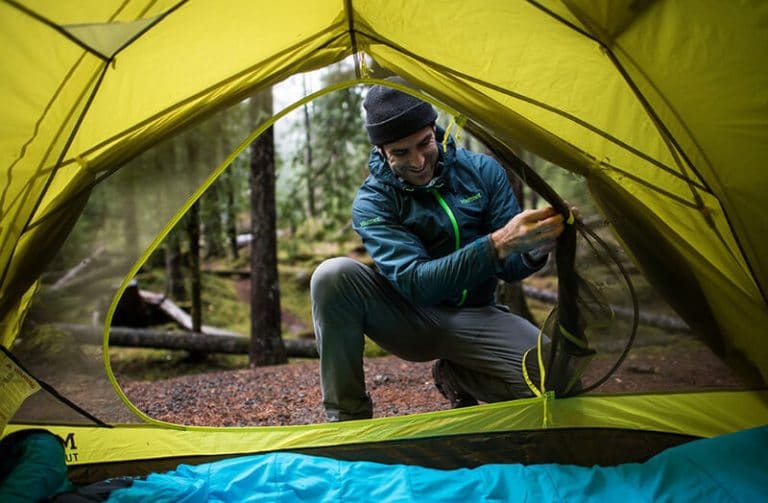I. Introduction to Making a Tent

A. Overview of DIY Tent Making
Making a tent from scratch can be a rewarding and fulfilling DIY project. It allows you to customize the design, size, and features to fit your specific needs and camping preferences.
B. Understanding the Benefits of Creating Your Tent
Creating your own tent provides a sense of accomplishment and pride. It also allows you to save money compared to purchasing a pre-made tent. Additionally, DIY tents offer the opportunity to experiment with unique designs and materials.
C. Exploring Different Types of DIY Tents
There are various types of DIY tents you can make, including dome tents, A-frame tents, teepee tents, and hammock tents. Each design offers its own set of advantages and considerations.
II. Choosing the Right Tent Design
A. Selecting a Tent Design that Fits Your Needs
Consider the intended use, capacity, and terrain when selecting a tent design. Dome tents are popular for their stability and spaciousness, A-frame tents are simple and easy to set up, and teepee tents offer a unique and visually appealing design.
- Dome, A-Frame, or Teepee Style Tents
Dome tents are self-supporting and can withstand strong winds. A-frame tents are lightweight and portable. Teepee tents provide ample headroom and are visually striking.
- Considering Size, Weight, and Portability
Choose a tent size that accommodates the desired number of occupants comfortably. Consider the weight and portability if you plan to carry the tent during backpacking trips.
B. Gathering Necessary Materials and Tools
![[BIG SALE] Camping Tents & Shelters Under $99 You’ll Love In 2022 | Wayfair](https://secure.img1-fg.wfcdn.com/im/14113279/compr-r85/6413/64138151/Camping+Tents+&+Shelters+Under+%2499.jpg)
- Identifying Required Materials for the Chosen Design
Research and gather the necessary materials for your chosen tent design. This may include tent poles, fabric, stakes, connectors, zippers, and any additional features you wish to incorporate.
- Collecting Tools for Tent Construction
Ensure you have the necessary tools for tent construction, such as scissors or a utility knife, sewing machine or heavy-duty thread and needle, grommet kit, and a hammer.
III. Constructing the Tent Frame
A. Setting Up Tent Poles or Supports
- Assembling and Positioning Tent Poles
Follow the instructions provided with your chosen tent design to assemble the tent poles or supports. Position them according to the design’s specifications, ensuring proper alignment and stability.
- Ensuring Stability and Proper Alignment
Check the stability and alignment of the tent poles or supports. Adjust as necessary to ensure a sturdy and secure frame.
B. Attaching Frame Components Together
- Joining Tent Poles or Supports Using Connectors
Use connectors or fittings designed for your tent frame to securely join the poles or supports together. Follow the manufacturer’s instructions for proper attachment.
- Reinforcing Joints for Added Strength
Consider reinforcing the joints of the tent frame with additional supports or brackets, if desired. This can provide extra stability and strength to withstand harsh weather conditions.
IV. Creating the Tent Outer Shell

A. Cutting and Assembling Tent Fabric Panels
- Measuring and Cutting Fabric to the Desired Size
Measure and cut the fabric panels according to the dimensions specified in your tent design. Leave additional fabric for seams and allowances.
- Sewing or Attaching Fabric Panels Together
Sew or attach the fabric panels together using a sewing machine or heavy-duty thread and needle. Follow sewing patterns or instructions specific to your tent design.
B. Attaching the Outer Shell to the Tent Frame
- Aligning Fabric with the Tent Frame
Position the fabric shell over the tent frame, aligning the seams and edges with the corresponding parts of the frame.
- Securing Fabric to the Frame with Fasteners or Ties
Use fasteners, ties, or grommets to secure the fabric to the tent frame. Ensure a tight and secure fit to prevent any sagging or movement during use.
V. Adding Inner Layers and Features

A. Sewing or Attaching Inner Tent Layers
- Creating Inner Walls or Dividers if Desired
If your design includes inner walls or dividers, sew or attach them to the fabric shell based on your desired configuration. Consider using mesh panels for airflow and visibility.
- Ensuring Proper Fit and Alignment
Ensure the inner layers fit properly and align with the outer shell and tent frame. Make any necessary adjustments to achieve a precise fit.
B. Incorporating Ventilation and Door Systems
- Adding Ventilation Openings for Airflow
Consider adding ventilation openings or mesh windows to promote airflow and reduce condensation inside the tent. Ensure proper placement and sizing for optimal ventilation.
- Installing Zippers or Fasteners for Tent Entry and Exit
Install zippers or other suitable fasteners for the tent entry and exit points. Test their functionality and durability to ensure smooth operation.
VI. Testing and Final Adjustments
A. Checking Stability and Structural Integrity
Thoroughly test the stability and structural integrity of the tent frame by setting it up and inspecting it from all angles. Make any necessary adjustments or reinforcements to ensure a robust and safe structure.
- Assessing Tent Frame Stability and Connections
Check the stability of the tent frame by applying gentle pressure or pulling on the poles. Inspect the connectors and joints for any signs of weakness or potential failure points.
- Making Necessary Adjustments for Proper Functionality
Make any necessary adjustments to the tent frame or fabric to ensure proper functionality. Ensure that the tent can be set up and taken down easily and without any undue stress or strain.
B. Waterproofing and Weatherproofing
- Applying Waterproofing Coatings or Seals
Consider applying waterproofing coatings or sealants to the fabric to enhance its water resistance. Follow the manufacturer’s instructions for proper application.
- Testing Tent for Water Resistance and Weatherproofing
Test the tent in various weather conditions, including rain or simulated rain, to ensure its water resistance and weatherproofing capabilities. Make any necessary adjustments or improvements based on the test results.
Making your own tent can be a rewarding and fulfilling experience that allows you to customize your shelter to fit your needs. By choosing the right design, gathering the necessary materials and tools, and following the step-by-step construction process, you can create a functional and personalized tent. Remember to test and make any final adjustments, as well as ensure proper weatherproofing. Enjoy the satisfaction of camping in a tent that you made yourself!
